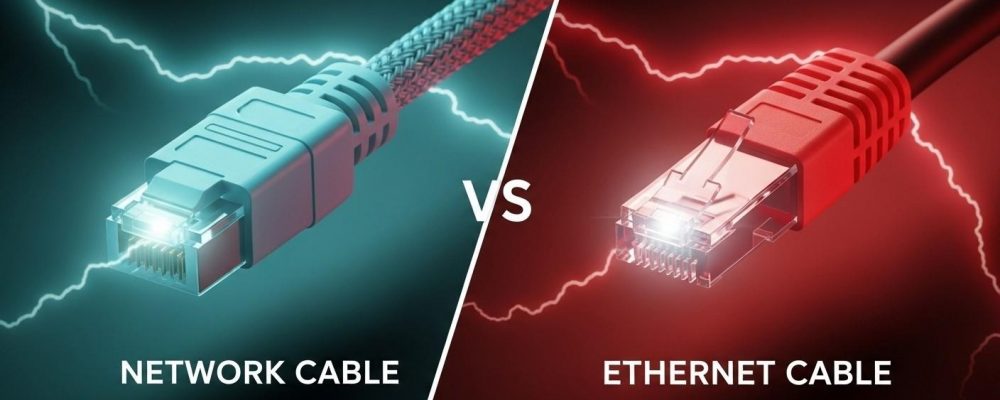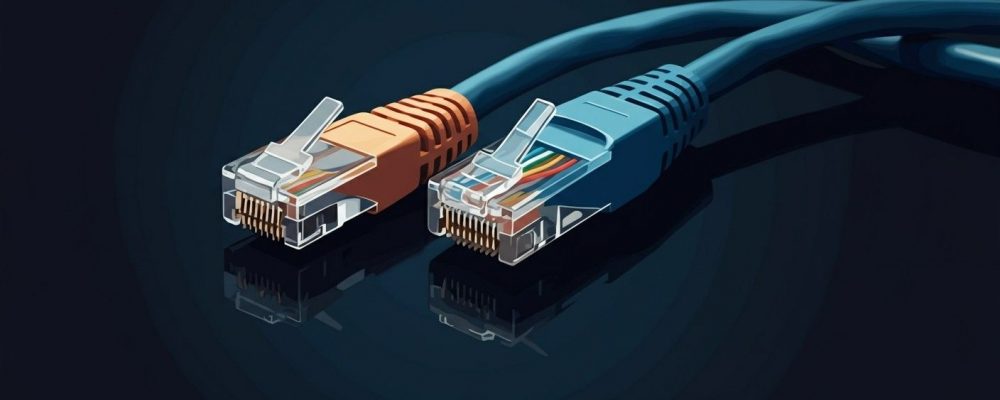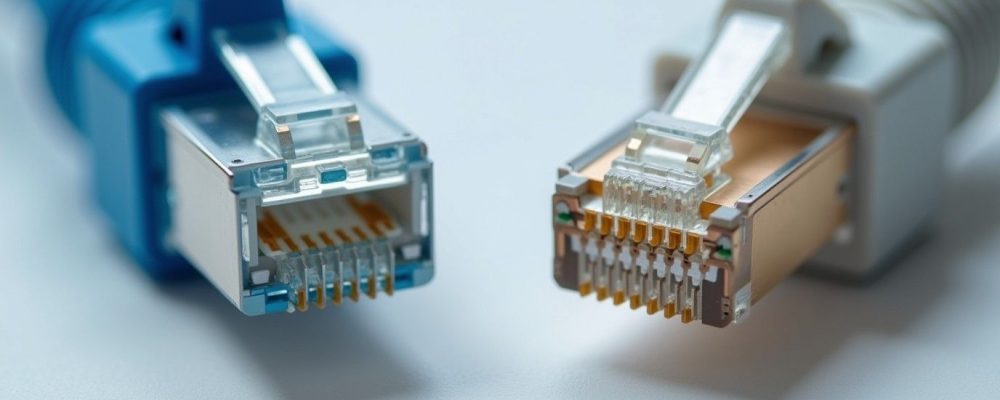Summary : Network cables are a broader class of cables that link devices, such as fiber optic, coaxial, and Ethernet cables. Ethernet cables are a special kind of network cable utilized primarily for LANs, providing data transfer, RJ45 connectors, and in some cases power (PoE). The appropriate cable prevents sluggishness, dependability, and future-proofing.

When it comes to modern connectivity Wi-Fi is often the first thing to come to mind. Yet, there’s one player that shows its importance behind any stable internet connection, be it at home, office, or any huge data center: the cables.
Here’s where the confusion normally sets in. Many people wonder, “is a networking cable an Ethernet cable?” or “is a networking cable the same as an Ethernet cable?” Network cable, Ethernet cable, LAN cable, and even “internet cable” are all terms that are used interchangeably with little to no consideration of the distinction. While they are interrelated, that distinction can really matter in the end.
Choosing the cable changes not only the speed and reliability of your network but how future-proof it will become. In this blog, we will break down network cable vs Ethernet cable, including the typical uses of both, and highlight some considerations that will help make your decision easier for your setup.
Think of a network cable as an umbrella term. It includes any cable that connects devices and allows them to exchange data. Some examples are:
Network cables run all over the place on LANs (local Area Networks), WANs (Wide Area Networks), or MANs (Metropolitan Area Networks). They are the veins of any network, carrying data from device to device.
An Ethernet cable is a specific type of network cable built to carry Ethernet traffic according to the IEEE 802.3 standard. You’ll typically use it to:
Key traits of Ethernet cables:
Simply put, every Ethernet cable is a type of network cable, but not all network cables are Ethernet cables, since some, like fiber optic or coaxial, serve other purposes.

Feature | Network Cable | Ethernet Cable |
Definition | Broad category covering fiber, coaxial, twisted pair, etc. | Specific type of network cable for Ethernet LANs |
Scope | LAN, WAN, MAN, backbone networks | Primarily LANs for device-to-device connections |
Transmission Medium | Copper, fiber optics, coaxial | Mostly twisted-pair copper (Cat5e–Cat8) |
Connectors | SC/LC for fiber, BNC/F-type for coax, RJ45 for Ethernet | RJ45 only |
Distance / Range | Fiber runs kilometers, coax moderate | Standard Ethernet up to 100 meters |
Speed / Bandwidth | Fiber >100 Gbps, coax slower | Cat5e: 1 Gbps, Cat6/6a: 10 Gbps, Cat7/8: up to 40 Gbps |
Power Transmission | Typically no power | Supports PoE |
Use Cases | Long-distance links, industrial setups, data centers | Home/office LANs, gaming, small business networks |
The Ethernet cables consist of four pairs of twisted copper wires. Twisting reduces interference, and higher categories commonly have shielding to provide better stability.
The category of network cables is varied:
Having said that, even if you pay for 1 Gbps on your plan, having Cat6a or Cat7 cables installed today will allow you to upgrade in the future without having to undergo rewiring.

Many people say “internet cable,” but it is mostly a casual term. In practice, what they mean is an Ethernet cable that is inserted into a modem or router.
“Internet cable,” to be technically precise, is not the right term. Ethernet cables carry data over local networks and follow strict standards with respect to speed and reliability.
Ethernet cables comprise the categories of Cat5e, Cat6, and Cat6a. The higher category, the faster the speed offered and the better the performance. Some may be equipped with power over Ethernet (PoE), meaning that they will be able to transfer both data and electricity to a specific device such as a security camera or an access point.
So, what’s the difference?
Both are equally important, but knowing a little about their differences can help you put to use the knowledge in choosing the one that is right for you. Right from setting up a home office to refurbishing an existing office and setting up an entirely new facility, this particular cable is needed for quick, reliable, and future-proofing connectivity.
Get your network running at full speed. Contact Network Drops today for expert cabling solutions!
No, an Ethernet cable is just one component in a network cable. There are fiber optic cables, and coaxial cables, among others.
Yes, with the help of Power over Ethernet (PoE), certain Ethernet cables can actually provide power to devices. This is done by supplying both data and electricity, useful for cameras, access points and phones.
The usual copper cable retains strength for a distance of about 100 meters or 328 feet, ideally with little or no signal loss. A distance beyond this can be compensated by using repeaters or by switching to fiber optic links.
Not really. Every Ethernet cable counts as a LAN cable, but LAN cables can include other types too. LAN just refers to the local area network itself. Ethernet points to the specific technology and the cables that support it.
Indeed it can. Ethernet connections have reduced latency and interference. These features make Ethernet best suited for gaming or professional use.
"*" indicates required fields
Scott Fcasni is the driving force behind Shock I.T. Support’s commercial datacomm cabling division, delivering expert solutions that power reliable, high-performance network infrastructures. With extensive experience in structured cabling and a commitment to precision, Scott ensures that every project—whether for small businesses or large enterprises—meets the highest standards of quality and scalability.